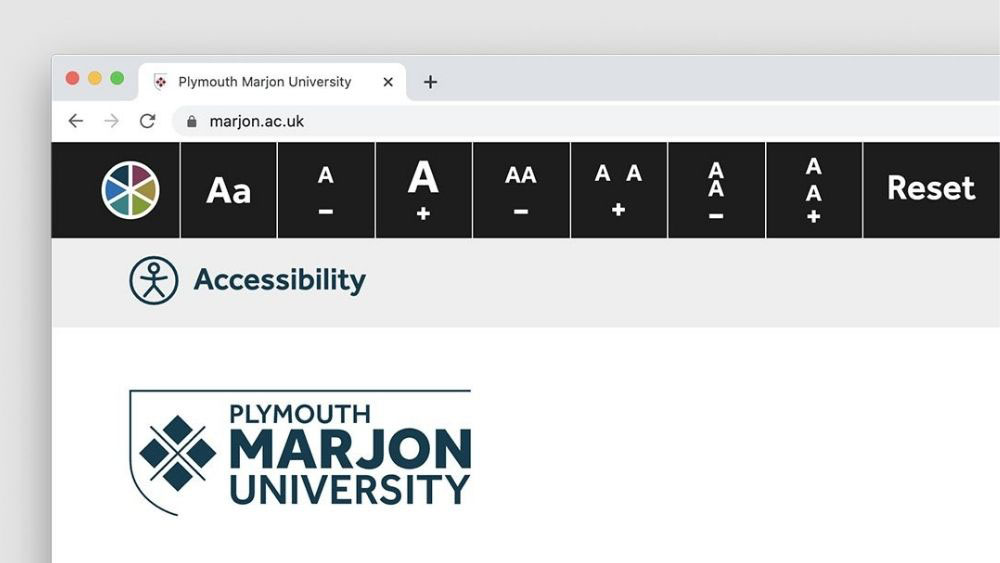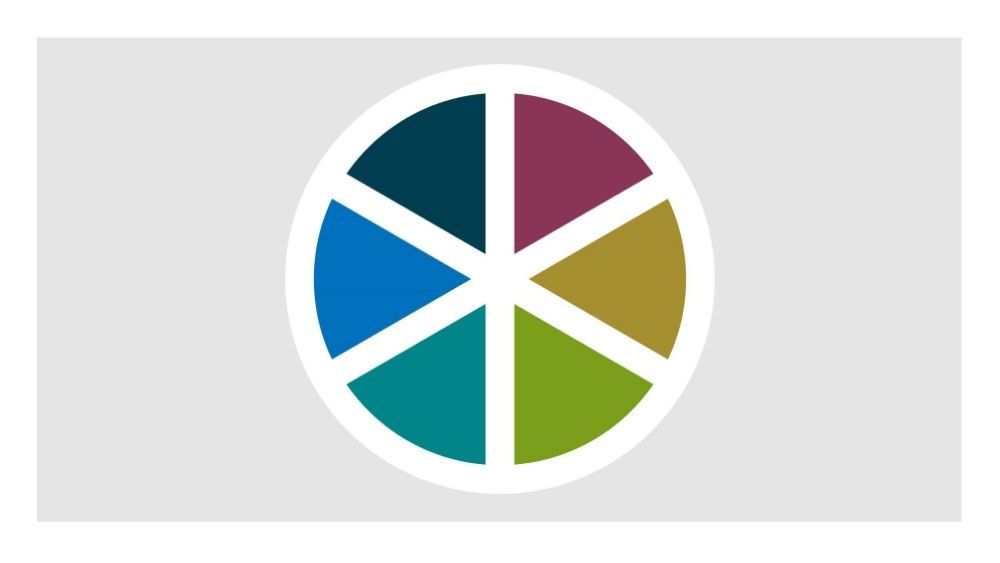Six design tips for digital learning
If you’re an educator you’ve most likely had to get to grips with digital learning, probably with about a week to do so when everyone went into lockdown. Now that you’ve had a go this is our guide to help you tune up your skills in the digital learning space.
What is digital learning?
Digital learning is any type of learning that is enabled or facilitated through technology. It is typically accessed via a computer or mobile phone and encompasses lectures, websites, apps, ebooks and ejournals, blogs, podcasts, videos, online communities and forums.

Learning has always made use of the latest technology of the time; once this was the postal service when that was a new thing, then TV and radio, and now online. All digital learning is underpinned by the ideas of democratic education and social justice because it is available to everyone. The technology itself has to feel invisible; it’s the medium for learning and it relies on good learning design, but we’ll get to how to do that later.
As the pandemic started there was a rush to get everything online. In that rush, a two-hour in-person workshop was simply translated into a two-hour online workshop. But now educators are structuring the learning into smaller chunks to help the students to learn at their own pace. They can go back and re-read tricky topics or accelerate through topics as they choose.
Dr Lynne Wyness, who designs distance learning courses at Plymouth Marjon University outlines more advantages of digital learning in a blended teaching model which combines face-to-face and online: “By putting some of the learning content online, you free up time for face-to-face teaching so you can go deeper into the questions. It allows time for mastery. But it isn’t simply a replication of face-to-face learning, you’ve got to adapt the teaching. When you combine the best of digital and in-person learning, then you’ve got something really powerful.”
Here are six elements of digital learning to consider:
1. Technology
What technology is available? How reliable is it? What do the students think about it? What are some of the benefits and challenges of it? What access issues do your students face? Are there sufficient internet speeds?
It’s worth remembering that technological issues are one of the cited reasons for drop-out rates being higher in digital learning than in traditional education. Some organisations use a Learning Management System (LMS) such as Blackboard, WebCT, Moodle, or Canvas to deliver their online learning. It’s important to have spaces for educators to come together to share best practice and learning designs, and to troubleshoot and get help when things go wrong.
Karl M. Kapp, a leader in the field of online learning, outlines these five characteristics of online learning technologies and software:
- Maintainability - How simple is it to maintain, update, add new users? Can you copy content from one year to the next? What admin processes do you need to know?
- Compatibility - Is your system as compatible with other learning platforms and applications? With the growth of Application Programming Interfaces (API) and Learning Tools Interoperability (LTI) this has become less of an issue but software updates remain a huge issue for users of old computers, programmes or browsers. This is one of the reasons why Microsoft have cornered the market to a certain extent, with economies of scale allowing them to maintain systems for education institutions.
- Usability - How easy is the learning platform to use and navigate?
- Modularity - Does the learning platform allow content to be chunked up or modularised and reused? This is the concept of the ‘reusable learning object’.
- Accessibility – How are you going to ensure your content is accessible in terms of those with physical or learning disabilities?
Accessibility for digital learning
Did you know that up to 20% of internet users have a disability that could affect their digital learning experience on your website? This could be hearing, motor or visual difficulties or learning disabilities. Thankfully, there is a lot of simple stuff that you can do to make your lessons accessible, and by doing so you’ll improve the ease-of-use for everyone.
Be clear and concise. Write in simple language, then rewrite so that you say the same thing but shorter for clarity. Always avoid jargon.
Avoid special characters and custom fonts. Swirling fonts can be hard to read and assistive tools read special formatting very differently, if at all. Just don’t do it.
Don’t put text over an image; text is harder to read if you’ve got a busy background.
Never rely on colour-coding to convey meaning, some people can’t see the colour or see it differently from what you’re expecting them to see.
Always provide alt text. Alt text is used to describe images to people who can’t see them so always add it when you use an image.
Provide adequate colour contrasts. If there is text in your image you need a high contrast between the two colours. You may need to tweak your brand colours for online - use a colour contrast checker like WebAim.
Always include video captions or a transcript. Sounds like a lot of work? It doesn’t have to be – Adobe Premiere and YouTube both offer automatic captioning or go to Rev.com for a transcript written by a real human.


2. Structure and visuals
Start from the learner’s perspective. The basics of webpage design are relevant here because the structure and visual aspects of online learning are key to ease-of-use. Stick to the same font, the same headings and use a regular amount of white space to break up the page and allow it to ‘breathe’. Stick to the same terminology, explain that terminology if you need to, and be consistent in terms of navigation. Always include an intro and an outline of the learning outcomes for the lesson. Your learners shouldn’t feel like they have to learn how to use the platform, aim for intuitive with just the right amount of signposting and support messaging to keep them on track. Design to avoid ‘cognitive overload’; this is when the educator gives too much information or too many tasks to the learner simultaneously, leaving the learner unable to process this information. Ask for student feedback to help you evaluate how well your instructional design is working.
3. Content is king
Online learning shouldn’t be simply telling students stuff. The effective online educator is there to curate resources, present reflective questions, hold tutorials, and design collaborative activities.
Once you’ve selected a good range of content, how do you set that out? Let’s look to the principles for online learning set out by Clark & Mayer for some answers…
- The coherence principle - Keep your lecture or teaching session uncluttered. Ask yourself - how much content do I really need? Chose the key topics you needed to learn about and break them into short sessions, with independent tasks created to go alongside.
- The redundancy principle – Explain visuals with words in audio or text, not both. Don’t read out what you’ve already got written on the screen.
- The personalisation principle - Research shows that learners respond best to an informal conversational tone; talk as if your learners are in the room with you.
- The modality principle - It is better to use audio or video over presentation of words in text form. It’s more relatable when we hear a human voice talking to us, than to read something.
It’s important that educators acquire a level of video skills. Back to Dr Lynne Wyness: “Videos have become increasingly more popular – think YouTube, Facebook Live, Instagram TV. Learners expect to be able to see their teachers. If you’re in any doubt, go for video and record your lectures in short chunks and in an informal manner, that works best according to the evidence.
"In terms of your own professional development, consider what skills you need to develop? I would include presentation skills to the camera, basic video recording and editing, podcasting, sound, light and location considerations, as well as script writing. Go for the highest quality equipment you can get your hands on to cut down on any extraneous processing your learners will have to do. And if you’re self-filming on a phone get a microphone and a stand as that will help you get a professional finish”.
4. Resources - the educator as a curator
One of the roles of the educator has always been to provide resources. In some ways, it's even more important in the online learning environment because there is so much information out there.
Supply reading lists, links to sources specific to a session, suggested book chapters and textbooks. When learning is solely online it’s essential to make sure all books recommended are available as e-books, as access to physical books may be impossible for distant learners.
Think about the ways in which you can support learners to understand what is expected of them in their reading - for example, frame questions that help them focus on main points and perspectives, ask them to summarise key parts of the text, give them a rough idea of how long to spend on reading materials, and let them know it’s OK to scan a text for the meaningful points.
Draw on web-based resources, including YouTube videos, podcasts and blogs, and help students develop critical noses for reliable and credible web sources.
And don’t forget, once you’ve added all your web-based resources, managing these web-based resources also requires regular auditing to ensure resources remain relevant and links are still live.
5. Pedagogy - teaching and learning approaches
Designing quality teaching and learning online is no different to designing quality face-to-face teaching - it’s not to do with the technology per se but to do with choosing the best evidence-informed pedagogical approach for your context, appropriate to the purpose of learning and the learner profiles. So, careful design and planning are key, as they always have been.
Use both individual and group approaches, the latter includes methods such as discussion forums, collaborative projects, tasks with live group feedback sessions or breakout rooms.
One of the challenges facing online learning is that the lack of social presence and interaction can hamper students’ experiences of learning. To overcome this always consider social interaction in your instructional design. There is research that shows when an online sense of community is actively fostered students report feeling closer to their peers and teacher than they do in face-to-face contexts and that they feel like they learnt more, while educators have reported that written answers tend to be more thoughtful and considered, and that they feel they understand their learners’ abilities. Design for community and you’re on your way to designing for success.
6. Assessment
How do you know if learning has happened? Good assessment online is the same as good assessment offline, in both contexts you’re thinking about the same factors or principles of assessment.
One challenge is that online learning presents an environment or context in which it is relatively easy for a learner to copy and paste material other than their own and without citing their source. One of the solutions to this growing problem is to design authentic assessments. These are assessments that require the learner to bring something of themselves to the assignment, be it reflections, ideas, applications to practice, or perspectives. It can also mean that assessments are no longer simply essays but other types of assessment such as presentations, reflective journals, annotated bibliographies, reports, and the creation of resources. It’s far trickier to get someone else to do those for you.
The move to digital learning challenges people - educators and learners alike. Covid accelerated the rise of digital learning and it made us embrace digital learning faster than most of us imagined possible. As a result, we’ve built resilience into the education system and made learning more accessible to all.
Good digital learning is still just good learning and many educators are seeing that and developing engaging new approaches to their learning and teaching practice. If you’re interested in delving into how to design digital learning in a lot more depth then check out our MA Professional Education Practice. Would you have imagined say 10 years ago that someone could study their degree over a mobile phone? Are you interested to see how artificial intelligence and gamification are going to influence digital learning? The changes so far are really just the start, this is going to be one exciting journey!


